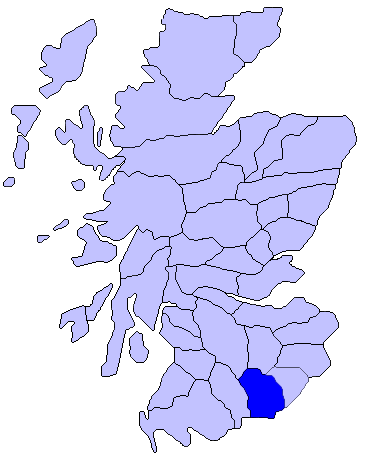|
Waterbeck
Waterbeck is a small village in Annandale, Dumfries and Galloway. It is located on Beck Water in the parish of Middlebie Middlebie is a hamlet and parish in the historic county of Dumfriesshire in Dumfries and Galloway, south-west Scotland. It is approximately east of Ecclefechan, and north-east of Annan, on the banks of the Middlebie Burn. Middlebie Parish c .... Waterbeck contains a former United Presbyterian church and a primary school. Most buildings in the village are cottages from the 19th century. Waterbeck has a village hall. Originally a school, it was built around 1900. Waterbeck is the birthplace of Sir John Carruthers Beattie. References {{DumfriesGalloway-geo-stub Villages in Dumfries and Galloway ... [...More Info...] [...Related Items...] OR: [Wikipedia] [Google] [Baidu] |
Middlebie
Middlebie is a hamlet and parish in the historic county of Dumfriesshire in Dumfries and Galloway, south-west Scotland. It is approximately east of Ecclefechan, and north-east of Annan, on the banks of the Middlebie Burn. Middlebie Parish consists of the ancient parishes of Middlebie, Pennersax (Pennersaughs) and Carruthers, united in 1609. Middlebie was the seat of a Presbytery from some time after the Reformation until 1743. It was then divided to form the Presbyteries of Langholm and Annan. Middlebie parish is now in the Presbytery of Annandale & Eskdale. It is bounded by the parishes of Tundergarth, Langholm, Canonbie, Half Morton, Kirkpatrick Fleming, Annan and Hoddam. The villages of Eaglesfield, Middlebie and Waterbeck lie within the parish, with Kirtlebridge on its southern boundary. Eaglesfield and Hottsbridge by Waterbeck still have primary schools. The school at Middlebie closed in 1972 nearly a hundred years after it opened. The Eaglesfield building is now jus ... [...More Info...] [...Related Items...] OR: [Wikipedia] [Google] [Baidu] |
Carruthers Beattie
Sir John Carruthers Beattie (21 November 1866 – 10 June 1946) was the first principal and Vice Chancellor of the University of Cape Town (1918–1937). Beattie was born in Waterbeck, Scotland. He graduated from Edinburgh University having studied at Munich, Vienna, Berlin and Glasgow. Soon afterwards he was appointed Professor of Applied Mathematics and Experimental Physics at South African College in Cape Town. He married Elizabeth Paton in 1898. They had two daughters and a son. Their son was killed while serving with the Royal Air Force in 1942. For his contributions to education in South Africa, he was knighted in 1920. He died in Cape Town. Life John Carruthers Beattie was born on 21 November 1866, in Dumfriesshire. He attended St John's Boarding School in Workington and Moray House in Edinburgh. He entered the University of Edinburgh and obtained a degree in Chemistry, Botany and Mathematics before furthered his studies in Physics at Munich, Vienna, Berlin and ... [...More Info...] [...Related Items...] OR: [Wikipedia] [Google] [Baidu] |
Annandale, Dumfries And Galloway
Annandale (Gaelic: ''Srath Anann'') is a strath in Dumfries and Galloway, Scotland, named after the dale of the River Annan. It runs north–south through the Southern Uplands from Annanhead (north of Moffat) to Annan on the Solway Firth, and in its higher reaches it separates the Moffat hills on the east from the Lowther hills to the west. A long-distance walking route called Annandale Way running through Annandale (from the source of the River Annan to the sea) was opened in September 2009. History Annandale was also an historic district of Scotland, bordering Liddesdale to the east, Nithsdale to the west, Clydesdale and Tweeddale to the north and the Solway Firth to the south. The district which was in the Sheriffdom of Dumfries and later became part of the County of Dumfries, one of the counties of Scotland. The main reorganisation took place during the Local Government (Scotland) Act 1889, which established a uniform system of county councils and town councils in Sc ... [...More Info...] [...Related Items...] OR: [Wikipedia] [Google] [Baidu] |
Dumfries And Galloway
Dumfries and Galloway ( sco, Dumfries an Gallowa; gd, Dùn Phrìs is Gall-Ghaidhealaibh) is one of 32 unitary council areas of Scotland and is located in the western Southern Uplands. It covers the counties of Scotland, historic counties of Dumfriesshire, Kirkcudbrightshire, and Wigtownshire, the latter two of which are collectively known as Galloway. The administrative centre and largest settlement is the town of Dumfries. The second largest town is Stranraer, on the North Channel (Great Britain and Ireland), North Channel coast, some to the west of Dumfries. Following the 1975 reorganisation of local government in Scotland, the three counties were joined to form a single regions and districts of Scotland, region of Dumfries and Galloway, with four districts within it. The districts were abolished in 1996, since when Dumfries and Galloway has been a unitary local authority. For lieutenancy areas of Scotland, lieutenancy purposes, the area is divided into three lieutenancy a ... [...More Info...] [...Related Items...] OR: [Wikipedia] [Google] [Baidu] |
United Presbyterian Church (Scotland)
The United Presbyterian Church (1847–1900) was a Scottish Presbyterian denomination. It was formed in 1847 by the union of the United Secession Church and the Relief Church, and in 1900 merged with the Free Church of Scotland to form the United Free Church of Scotland, which in turn united with the Church of Scotland in 1929. For most of its existence the United Presbyterian Church was the third largest Presbyterian Church in Scotland, and stood on the liberal wing of Scots Presbyterianism. The Church's name was often abbreviated to the initials U.P. United Secession Church It was founded in 1820 by a union of various churches which had seceded from the established Church of Scotland. The First Secession had been in 1732, and the resultant "Associate Presbytery" grew to include 45 congregations. A series of disputes, in 1747 over the burgesses oath, and in the late 18th century over the Westminster confession, led to further splits, but in 1820 two of the groups united to f ... [...More Info...] [...Related Items...] OR: [Wikipedia] [Google] [Baidu] |

